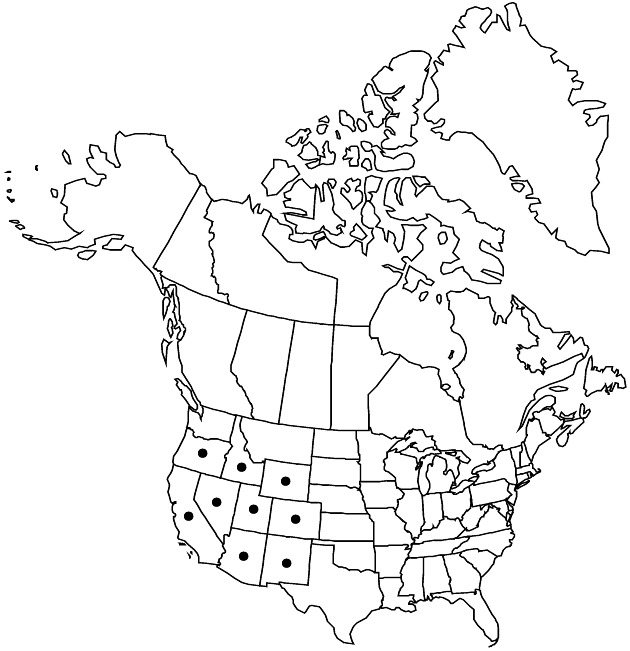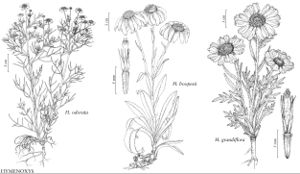Difference between revisions of "Hymenoxys hoopesii"
Sida 16: 6. 1994.
FNA>Volume Importer |
FNA>Volume Importer |
(No difference)
| |
Revision as of 18:45, 24 September 2019
Perennials, 30–100 cm (polycarpic, often with blackish, stout rhizomes). Stems 1–4, green throughout to often purple-red-tinted proximally to purple-red-tinted throughout, branched distally, glabrous or ± hairy. Leaves: blades simple, glabrous or ± hairy, gland-dotted; mid leaves simple. Heads 1–12 per plant, in paniculiform to corymbiform arrays. Peduncles 3–16 cm, ± hairy, tomentose distally near involucres. Involucres hemispheric to broadly campanulate, 12–17 × 19–26 mm. Phyllaries in 2 series, subequal; outer 16–24, basally connate 1/4–1/3 their lengths, ovate to lanceolate, 11–16 mm, apices acute; inner 20–26, obovate to elliptic, 7.5–8.5 mm, apices acuminate to acute. Ray florets 14–26; corollas usually yellow-orange to orange, 21–45 × 4.2–8.5 mm. Disc florets 100–325+; corollas 4.2–5.4 mm. Cypselae obpyramidal to narrowly obpyramidal, 3.5–4.5 mm; pappi of 5–7 lanceolate to lanceolate-acuminate scales 2.9–4.1 mm. 2n = 30.
Phenology: Flowering (May–)Jul–Aug(–Nov).
Habitat: Mountain meadows, open forests, along streams
Elevation: 1500–3700 m
Distribution

Ariz., Calif., Colo., Idaho, Nev., N.Mex., Oreg., Utah, Wyo.
Discussion
Selected References
None.
